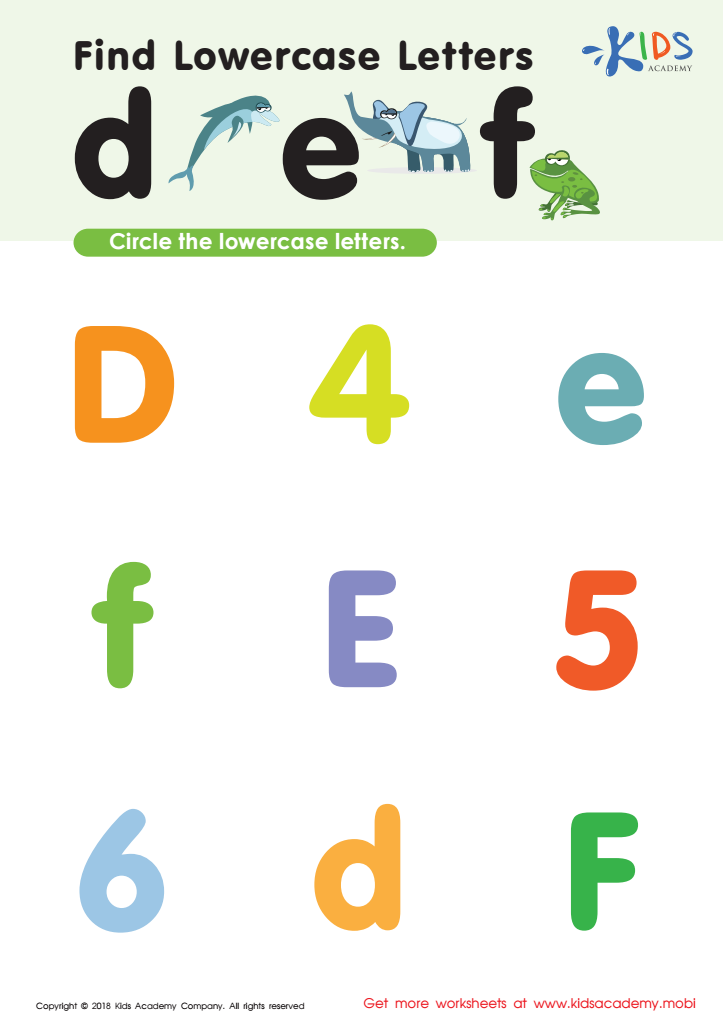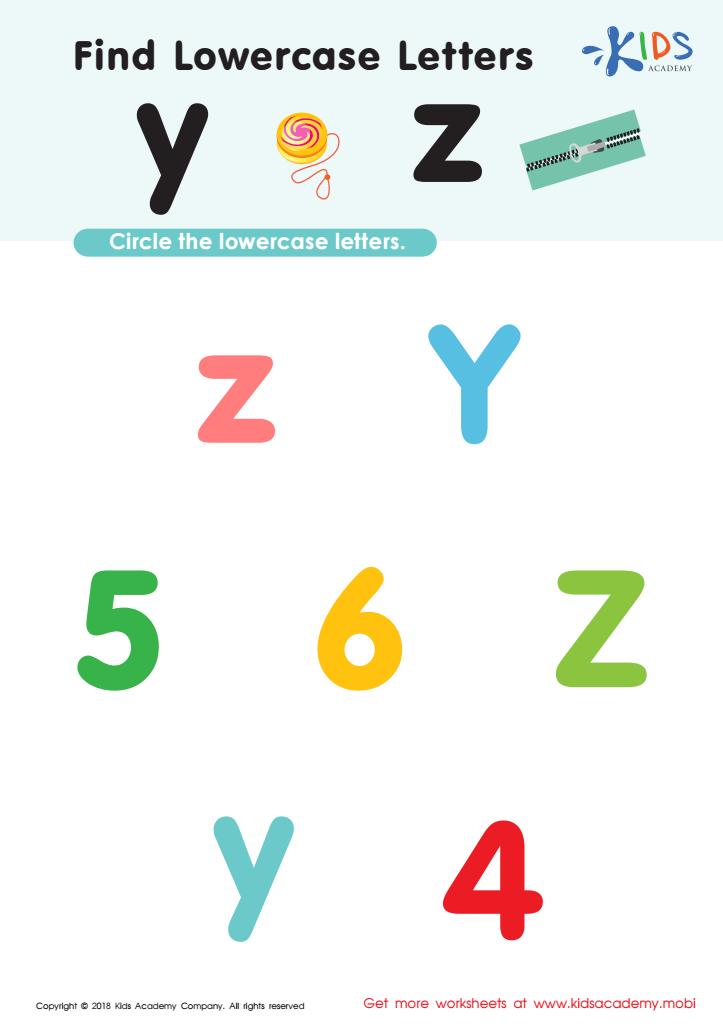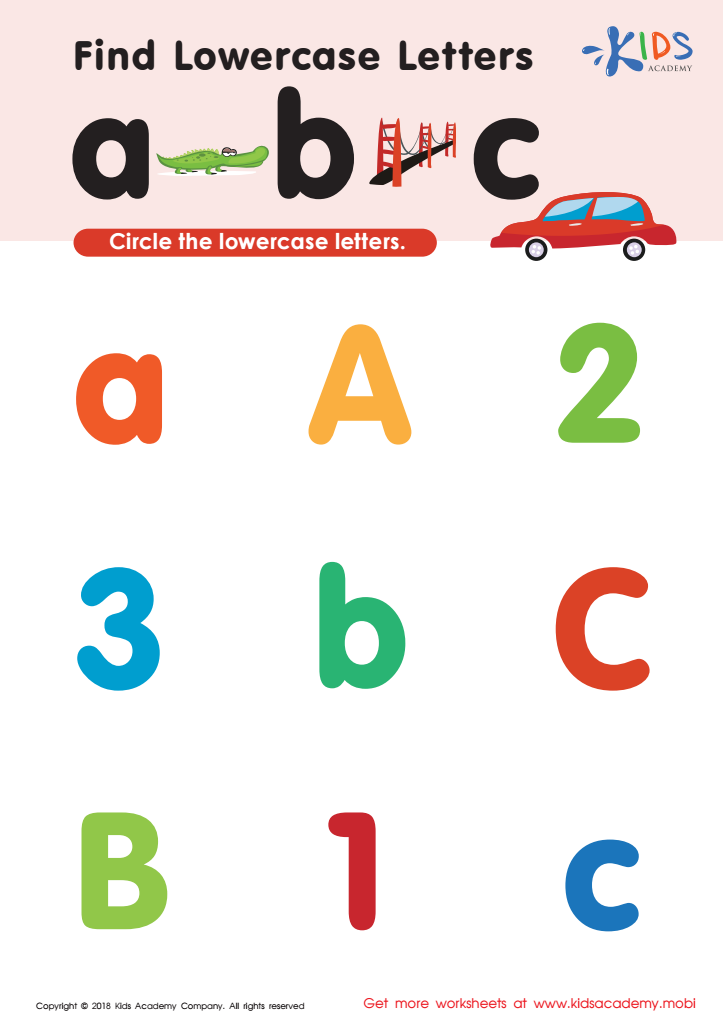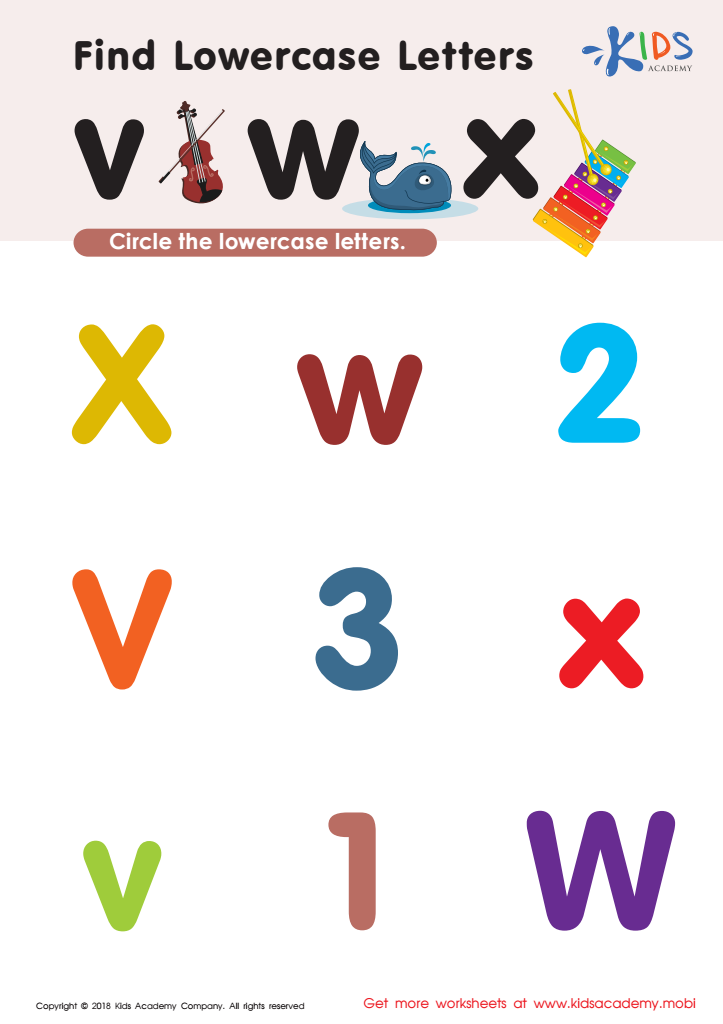Lowercase identification Normal Letter Recognition Worksheets for Ages 5-7
4 filtered results
-
From - To
Enhance your child's literacy skills with our engaging Lowercase Identification Normal Letter Recognition Worksheets designed for ages 5-7. These worksheets provide fun and interactive activities that focus on identifying and recognizing lowercase letters. By completing these exercises, children will build a strong foundation in letter recognition, essential for future reading and writing success. With vibrant illustrations and a variety of engaging tasks, learning becomes enjoyable and effective. Download these worksheets to help your child develop confidence in their letter recognition abilities and set them on the path to literacy mastery. Perfect for at-home learning or classroom use!


Find Lowercase Letters d e f Worksheet


Find Lowercase Letters y z Worksheet


Find lowercase letters a b c Worksheet


Find Lowercase Letters v w x Worksheet
Lowercase letter recognition is a crucial foundational skill for children ages 5-7, as it significantly influences their literacy development. Recognizing lowercase letters is essential for reading and writing, as most texts children encounter use these letters. By helping students identify and understand lowercase letters, parents and teachers support their overall literacy skills, ensuring that children can seamlessly transition from phonics instruction to actual reading.
Moreover, lowercase identification fosters essential cognitive skills, such as visual discrimination and memory retention. Understanding the difference between uppercase and lowercase letters expands children’s awareness of language, enabling them to form words and sentences accurately. This recognition enhances their confidence, motivating them to engage more actively in reading and writing activities.
Furthermore, engaging in activities focused on lowercase letter recognition can be a motivating and enjoyable experience, leading to a love for learning. Parents and teachers can incorporate interactive games, stories, and creative exercises that center on these letters, making the learning process fun and effective. By prioritizing lowercase identification, adults lay a solid foundation for lifelong literacy, ultimately encompassing better academic performance and enhancing communication skills as children grow. Investing time in these early skills paves the way for success in more complex language arts tasks later.
 Assign to My Students
Assign to My Students





















